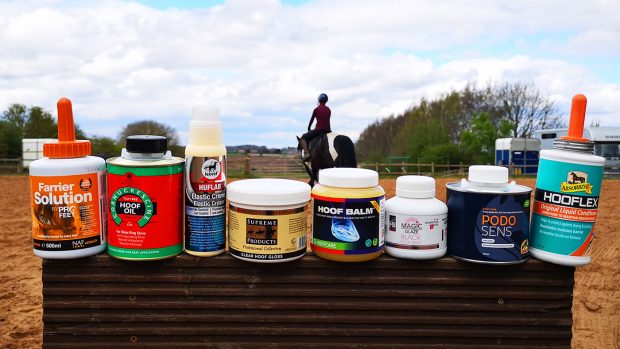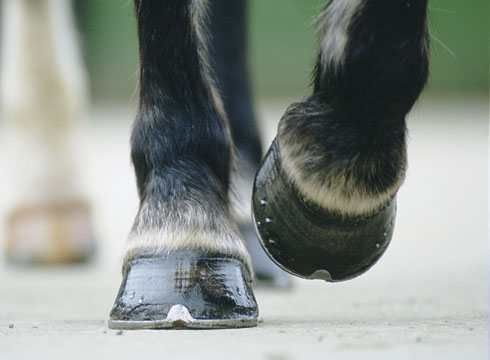When a foreign body penetrates the foot’s horny sole or frog and goes into the sensitive tissues below, the horse’s foot has a puncture wound. It is a common cause of lameness, with the outcome varying from trivial to fatal.
A puncture wound can also be called a pricked foot, solar/hoof penetration, pus in the foot or foot abscess. Common foreign bodies include nails, sharp flints, staples, such as from fences or shavings bags, and pieces of stiff wire.
Early stages
The penetration initially causes bruising and haemorrhage within the sensitive parts of the hoof. Treated correctly at this stage, the lameness sorts itself out within two to three days.
If the wound becomes contaminated, however, an infection develops, with pus and gas building up within the hoof. As the horny sole closes around the point of penetration, the pressure increases, causing extreme pain and severe lameness. If no drainage is provided, the pus will eventually follow the path of least resistance, running under the sole and tracking up the white line to burst out at the coronary band.
Clinical signs
With puncture wounds, there are several obvious indicators:
- An initial acute lameness, which varies according to the position and depth of penetration. Often, this goes unnoticed and may subside within 24 hours
- A more severe lameness may then develop over the next few days as infection builds up. The horse initially tries to take his weight on a certain part of the foot only – eventually, he will be unable to bear weight altogether
- If a hind foot is affected, a stringhalt-type hopping gait may result
- The foot feels hot and you can feel an increased digital pulse
- The sole may be sensitive to thumb pressure, initially in a particular area, then more generally as the infection spreads
- Often, there is a non-painful puffiness of the flexor tendon sheath above the fetlock joint
- Eventually, pus may discharge around the coronet
If you notice any of the above signs, you should:
- Call your vet
- Clean and examine the foot thoroughly. If the offending item is still present, leave it there, or, if you must remove it, keep it to show your vet
- Poultice or bandage the foot and leave the horse in a clean, dry environment
Your vet will thoroughly clean and examine the foot, removing the shoe if necessary and using hoof testers to locate areas of particular sensitivity.
Frog injuries are particularly difficult to find, as any wounds quickly close over. If there is nothing obvious, the vet may recommend tubbing the foot in a bucket of hot water mixed with Epsom salts (magnesium sulphate), or applying a hot poultice. This helps to draw the infection closer to the surface and also softens the sole, making it easier for your vet to examine.
Once the site of injury has been located, the vet will dig away at the sole with a hoof knife until the pus has been released, often resulting in immediate relief. The hole will then be flushed with dilute hydrogen peroxide or the antibioticmetronidazole, both of which work against the anaerobic bacteria that find their way in.
If there is any doubt at all about the horse’s tetanus vaccination status, the vet will give him a precautionary tetanus anti-toxin.You will need to poulticethe foot twice a day for a few days. Occasionally, the drainage hole closes over prematurely, causing the lameness to return. Your vet will then need to pare the sole more extensively. Packing the drainage hole with cotton wool soaked in an iodine solution may help to keep it open. If pus has burst out at the coronet, this should be treated in a similar way.
When the discharge has ceased, the wound should be covered with a dry dressing until new horn has grown. This usually takes about a week and it is vital to keep the foot clean and dry until then. Shoeing with pads may enable a horse to be brought back into work earlier.
Antibiotics tend not to be used as they prolong lameness if drainage is inadequate. However, they are beneficial when the wound is fresh, where there is good drainage, but swelling persists and for deep penetrations.




